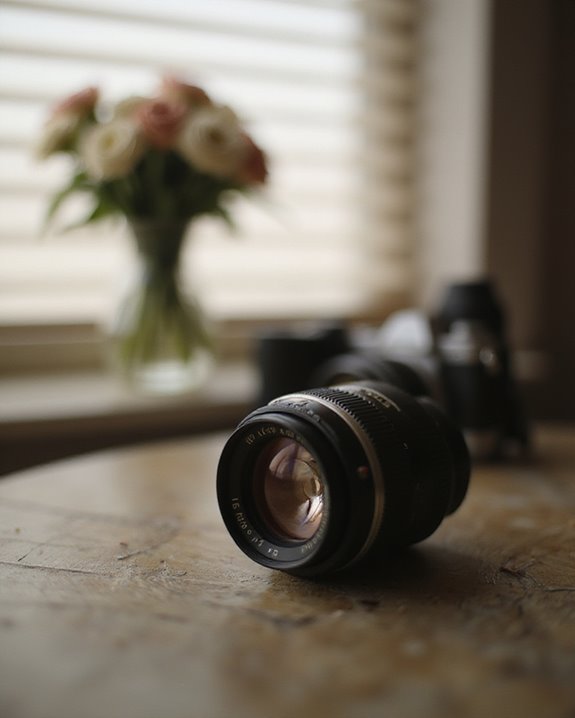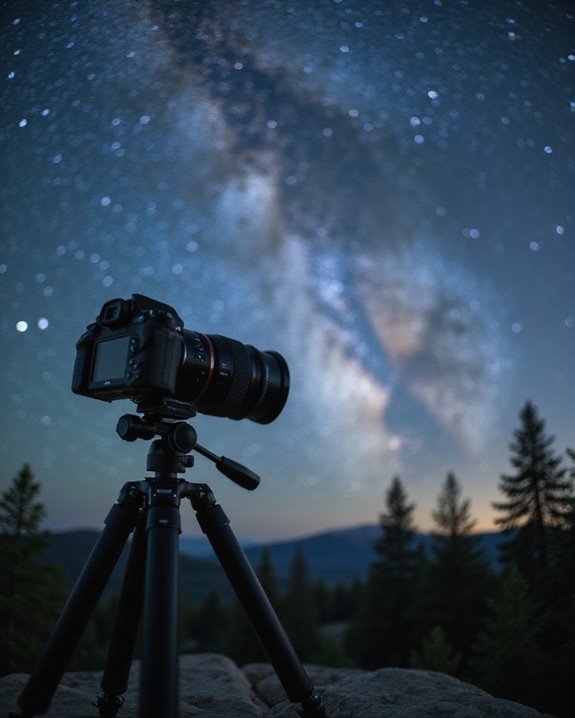The iPhone 11’s dual rear camera lenses are located within a square module positioned at the top-left corner of the rear panel, comprising a 12MP wide lens with an f/1.8 aperture designed for superior low-light capability and a 12MP ultra-wide lens featuring an f/2.4 aperture and a 120-degree field of view for expansive imagery. Lens placement is optimized to avoid obstruction, where coverage of the wide lens causes image blackout. Further specification and operational details follow.
Key Takeaways
- The iPhone 11 camera lenses are located in a square module at the top-left corner of the rear panel.
- The dual rear camera system includes a wide lens positioned at the top of the module.
- The ultra-wide lens is situated directly below the wide lens within the same module.
- Both lenses are designed for high-quality imaging and integrated into the rear panel’s upper-left section.
- Obstructing the wide lens results in the camera view darkening completely due to its primary role.
Overview of the Iphone 11 Camera System
The iPhone 11 incorporates a dual rear camera system composed of a 12-megapixel wide lens featuring an f/1.8 aperture and a 12-megapixel ultra-wide lens with an f/2.4 aperture and a 120-degree field of view. This configuration enables versatile photographic capabilities, balancing standard and expansive image capture. The wide lens, with its larger aperture, optimizes light intake for enhanced performance in low-light environments, while the ultra-wide lens broadens the field of view, facilitating extensive landscape and group photography. Integrated software enhancements, such as Smart HDR, augment dynamic range, resulting in improved tonal balance and color accuracy. Both camera lenses support Night Mode by synthesizing multiple exposures for superior low-light image quality. Additionally, the lens system is designed with advanced multi-coating to reduce glare and chromatic aberration, further improving image clarity. Collectively, the iPhone 11 Camera system demonstrates a technically advanced approach to dual-lens integration, enabling a broad spectrum of photographic applications.
Positioning of the Rear Camera Lenses on Iphone 11
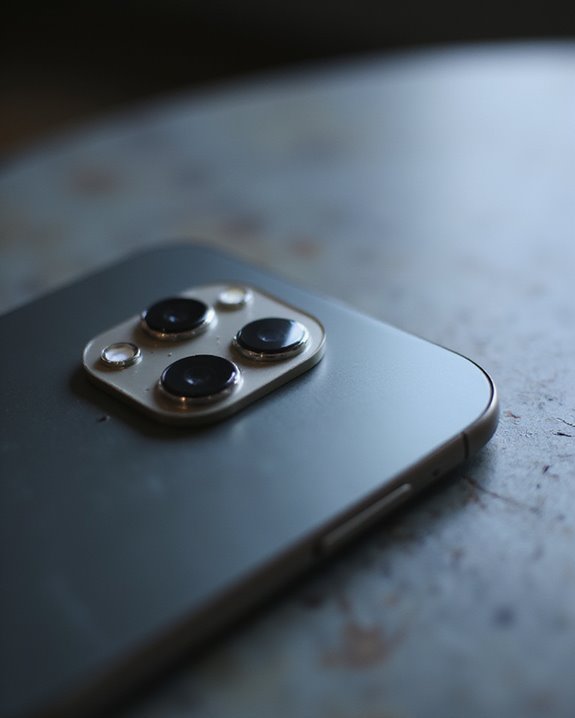
Positioning of the rear camera lenses on the iPhone 11 is characterized by a deliberate spatial arrangement within a square module located at the top-left corner of the device’s rear panel. This module houses two distinct lenses: the wide lens, positioned at the top, and the ultra-wide lens, situated directly below it. The rear camera’s wide lens functions as the primary sensor for standard photography, underscored by its critical placement at the module’s apex, which directly impacts image capture quality. Empirical observation confirms that obstructing the wide lens results in complete image darkening, highlighting its essential role. In contrast, the ultra-wide lens, located beneath, provides a 120° field of view, expanding photographic scope without altering the wide lens’s foundational positioning within the rear camera assembly. The lens placement is optimized to ensure both lenses deliver high-quality images while maintaining the device’s sleek design.
Differences Between Wide and Ultra-Wide Lenses

Differences in optical design and functional application between the wide and ultra-wide lenses on the iPhone 11 greatly influence photographic outcomes, particularly regarding resolution, aperture, and field of view. Both camera lenses possess a 12MP resolution; however, the wide lens features an f/1.8 aperture, enabling superior low-light performance, whereas the ultra-wide lens has an f/2.4 aperture, resulting in reduced light intake. The ultra-wide lens offers a 120° field of view, substantially broader than the wide lens’s standard framing, facilitating expansive scene capture such as landscapes and group photos. Additionally, the wide lens emphasizes detailed, focused images with minimal distortion, contrasting with the ultra-wide lens’s design, which prioritizes wide-angle perspectives while managing distortion. Integration with Smart HDR software further complements these optical characteristics, optimizing image quality respective to each lens’s strengths. Furthermore, users can enhance their photography experience by utilizing wide-angle lenses that provide broader framing options for capturing more of the scene in a single shot.
How to Select and Use Camera Lenses in Ios 18
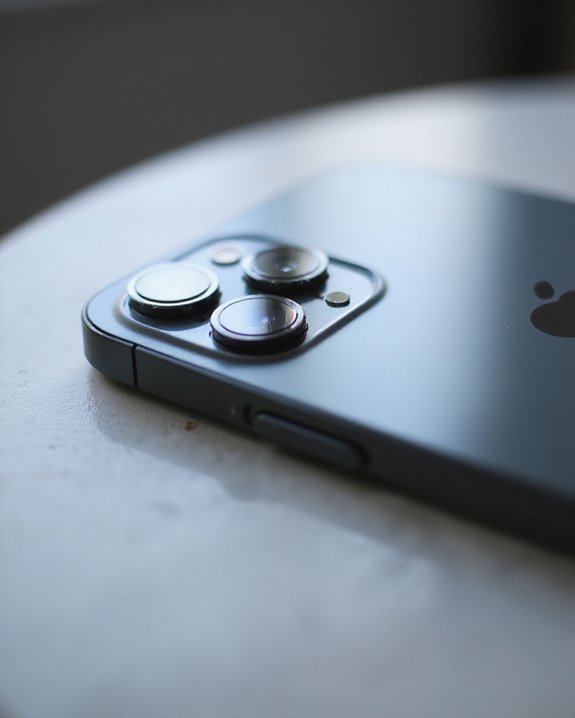
Effective utilization of the iPhone 11’s dual 12MP camera system in iOS 18 depends greatly on the ability to select and switch between the wide and ultra-wide lenses, each with distinct optical parameters such as aperture size (f/1.8 for wide, f/2.4 for ultra-wide) and field of view (standard framing versus 120°). Lens selection is achieved via the lens switcher icon in the native Camera app, facilitating rapid changes in perspective. Third-party applications like ProCam and FiLMiC Pro provide granular control, enabling manual lens choice tailored for stills and professional video, respectively. The integrated Smart HDR function optimizes image quality based on the selected lens. Disabling Auto Macro in settings prevents automatic focus shifts, thereby supporting manual lens control and enhancing image capture accuracy when using external lenses.
Common Questions About Iphone 11 Camera Lens Functionality
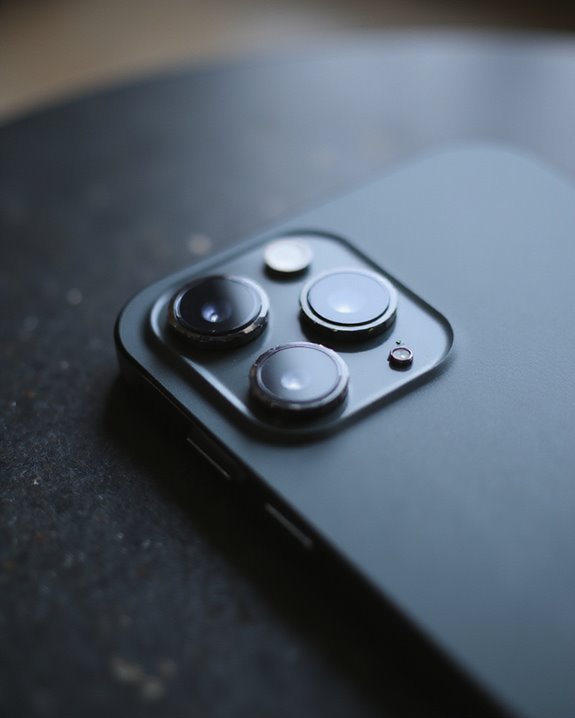
Common inquiries regarding the iPhone 11’s camera lens functionality primarily focus on the operational roles and performance distinctions of its dual 12MP rear lenses. The device incorporates a wide lens with an f/1.8 aperture, positioned at the bottom, responsible for standard image capture and supporting Smart HDR and Night Mode features. The ultra-wide lens, located above, offers a 120° field of view, enabling expansive scene capture but requires appropriate app settings to optimize output. Empirical observations show that covering the top (ultra-wide) lens results in considerably dark images, indicating its central role in primary imaging, whereas obstructing the bottom lens minimally impacts picture quality. Users can manually select which lens to activate within the iPhone Cameras app interface, illustrating how these lenses work synergistically to enhance photographic versatility in iPhone 11’s dual-camera system.
Tips for Maintaining and Protecting Your Iphone 11 Camera Lenses
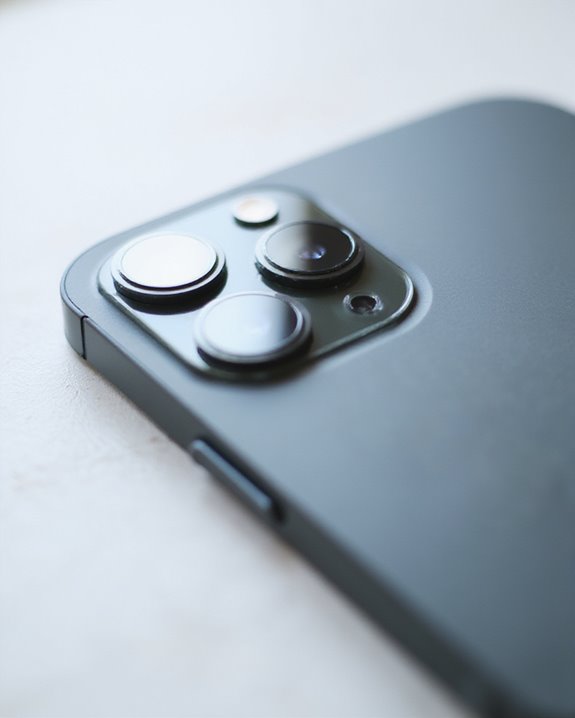
Maintaining ideal functionality of the iPhone 11 camera lenses necessitates adherence to specific protective and cleaning protocols designed to preserve image quality and device longevity. Employing a protective case with raised edges minimizes direct impact and abrasion risk, effectively reducing lens surface micro-scratches that degrade optical clarity. Regular cleaning using a microfiber cloth eliminates particulate contaminants and oils that cause image distortion and decreased sharpness. Incorporating tempered glass lens protectors provides an additional barrier against mechanical stress, mitigating the probability of cracks and shattering. Avoiding unprotected storage in pockets or bags further limits cumulative surface wear, preserving focus accuracy. In cases of irreversible damage, professional lens replacement services restore optical performance while maintaining factory calibration, ensuring the iPhone’s imaging system operates within original specifications without compromising sensor alignment or autofocus precision.
Troubleshooting Camera Lens Issues on Iphone 11
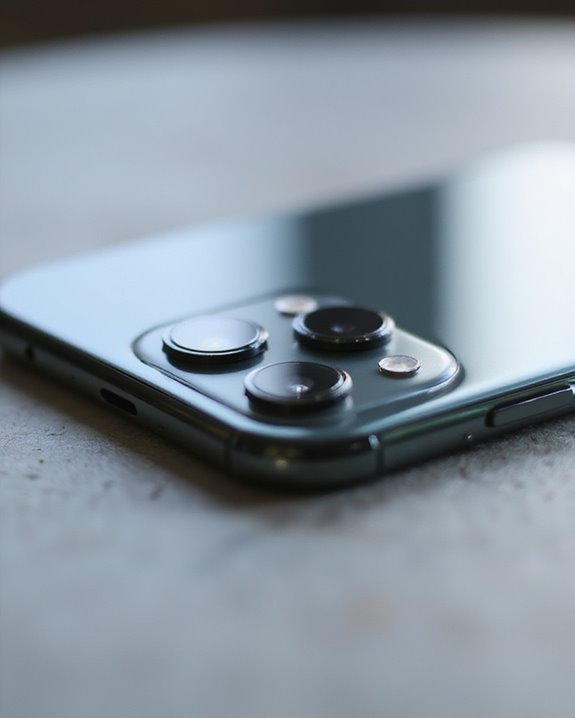
Troubleshooting camera lens issues on the iPhone 11 involves a systematic evaluation of physical and software-related factors that affect image fidelity and focusing accuracy. Physical damage such as scratches or cracks on the lens commonly degrades image quality, with user reports confirming resolution improvements post-replacement using specialized kits. Dust accumulation within the lens assembly introduces dark spots and blurriness, necessitating routine cleaning with microfiber cloths or professional servicing. Focus inconsistencies observed on the iPhone 11 Pro and Pro models can be mitigated by disabling Auto Macro settings and employing third-party applications like ProCam for manual lens selection. DIY lens replacement, achievable in 20-40 minutes with precision tools, requires post-repair distortion assessments. Alternatively, professional repairs, costing between $150 and $300, guarantee OEM part installation and diagnostic validation, preserving the device’s optical performance and longevity.
Frequently Asked Questions
Does the Iphone 11 Have a Camera Lens?
Lens verification confirms the iPhone 11 includes multiple camera lenses, essential in camera basics. Its dual 12MP lenses, wide and ultra-wide, enable versatile photography through high-quality imaging and advanced software integration for enhanced photo capture.
Where Is the Camera Lens on My Phone?
The camera placement varies across phone models, typically found on the back in the upper corner. For devices like the iPhone 11, lenses reside within a square module, housing both wide and ultra-wide options for versatile photography.
How Do You Clean the Camera Lens on Iphone 11?
Cleaning methods for the iPhone 11 camera lens involve gently wiping with a soft microfiber cloth and using canned air to remove debris. Protection tips include avoiding harsh chemicals and regular cleaning to maintain image clarity and prevent damage.
Why Does the Iphone 11 Have Two Camera Lenses?
Echoing the Lens Evolution akin to Renaissance artistry, the iPhone 11’s dual lenses offer Camera Advantages by blending wide and ultra-wide perspectives. This fusion enhances creativity, image quality, and adaptability, transforming ordinary shots into visual masterpieces.


